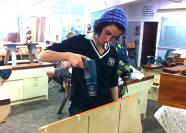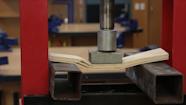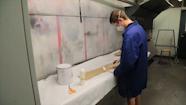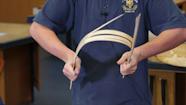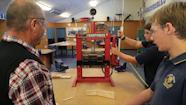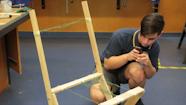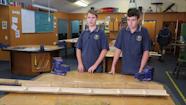Year 13 student outcome: Mobile lectern
This resource gives an example of a stellar student outcome and describes key aspects of the project and assessment opportunities.
Ruby's outcome | Modelling and construction | Resourcing | Fitness for purpose | Assessment opportunities
Ruby's outcome
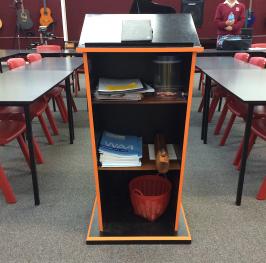
The client, my music teacher, needs a mobile lectern that he can use during class time and for school concerts and performances. Currently he uses a music stand – which is too small, very unstable, and lacks adequate storage. He would like something that looks tidy and that promotes the music department.
Ruby Walsh
Modelling and construction
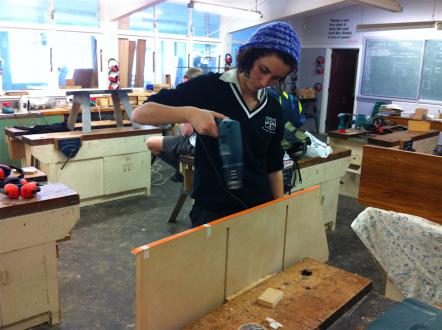
- Ruby showed the client several existing solutions to seek feedback on the materials and styles.
- She presented five conceptual designs and used the client's feedback to develop a final design.
- To elicit feedback on the proportions and the suitability of the compartments, Ruby created a miniature 3D model of the lectern.
- The finished height of the lectern was established by sitting in the classroom and determining an acceptable height so that shorter students sitting in the front row could also see the whiteboard.
- Ruby set the scroll on the top of the stand at an angle of twenty degrees so that it was ergonomically fit for the client.
- She put plastic sliders on the base of the lectern so that it would slide easily across the carpet.
- The stand was made from MDF and spray-painted black.
- The sides were biscuit-jointed to the top and base of the lectern.
- The edges were banded with orange paper tape to incorporate the black and orange colour scheme of the music department record label.
- Ruby carried out extensive testing and trialling on the best type of tape (plastic or paper), the thickness of the tape, and how to apply it to achieve a quality finish. Applying the paper tape using a heat gun was the preferred option because there was no sign of heat damage or bubbles, and it was manageable in terms of the timeframe and the skill level needed.
Resourcing
- The music teacher (the client) contributed to an agreed budget.
- Ruby sought advice on using tape on the edges from a local business. They offered the use of an edgebander for the sidepieces.
- A plastics design fabrication company in Auckland was contracted to create two acrylic shelves and to cut the music department logo into an orange acrylic circle.
Fitness for purpose in its broadest sense – some points to note
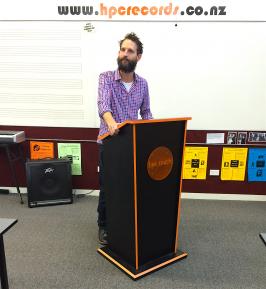
Technical acceptability
Through consulting with local businesses and following advice from her teacher (who is a furniture maker), Ruby ensured that she followed technically acceptable practices to achieve a quality outcome within budget.
Maintenance
The music teacher was advised only to use a soft dry cloth to clean the lectern and not to use any solvents because they could react with the paint and remove it.
Social acceptability
The music teacher had an instant connection with the lectern once placed in the classroom. “The way he touched it, moved around it, communicated from it demonstrated to me how much he valued the outcome,” said Ruby. The logo matched the record label logo and the much admired professional finish contributed to the branding of the music department. Most students were able to see the board when the lectern was in use, and it was easily moveable.
Health and safety
The lectern was stable, all the edges were smooth, there were no sharp corners and all safety procedures were followed during its construction. It was light enough to easily glide across the carpet. The scroll was at a perfect angle for the teacher and also comfortable and safe to lean on.
Assessment opportunities
Related videos
Finding materials to meet the specs (02:36)
Steve Andrew shares how students identify material specifications in a brief and then test materials to find those that are suitable....
Pushing the boundaries with materials (02:53)
Steve Andrew describes how his senior students have the confidence to select and work with unfamiliar materials.
Exploring unfamiliar materials (02:44)
Year 12 students from St John's College describe what they know about bamboo and how they are applying this knowledge to their projects....
Students and teachers talk about testing materials in year 11.
Evaluating materials for an outcome
Steve Andrew and students talk about using their knowledge to test materials for their projects at year 12.
Senior students select their own issues
Year 12 students talk about the issues that they have selected for their projects.

